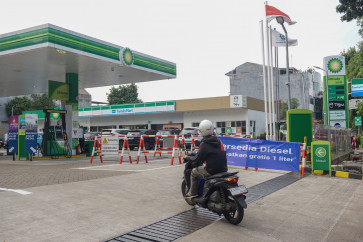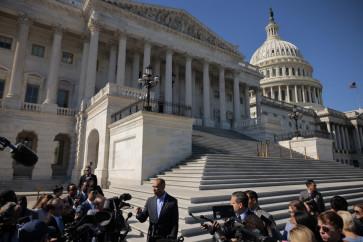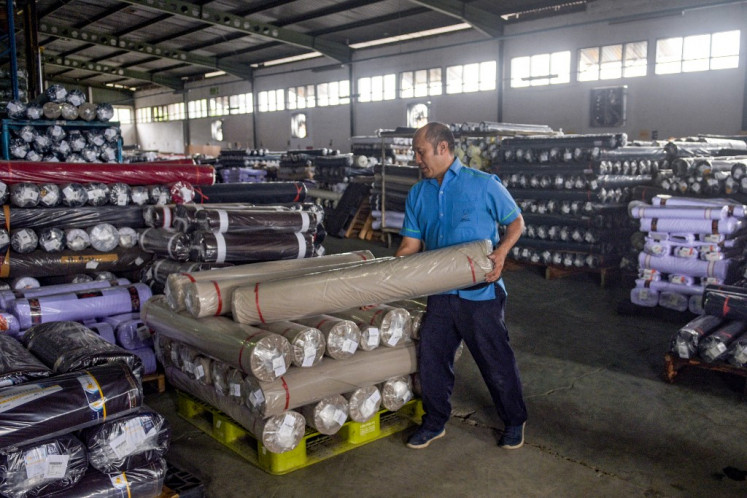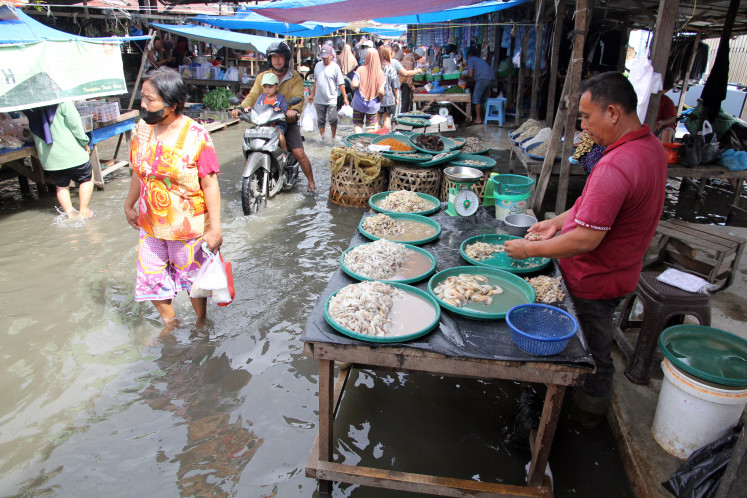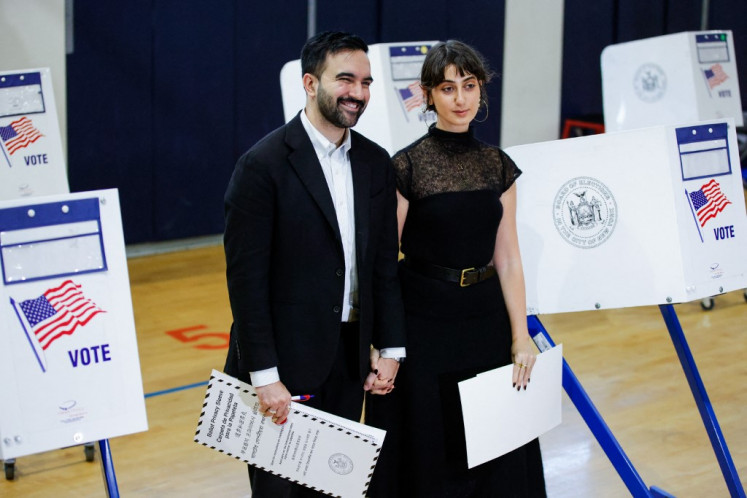Popular Reads
Top Results
Can't find what you're looking for?
View all search resultsPopular Reads
Top Results
Can't find what you're looking for?
View all search resultsDeveloping a creative economy
If you check today’s headlines of major Indonesian news agencies, you are unlikely to find the term “Cabinet reshuffle” or other related terms
Change text size
Gift Premium Articles
to Anyone
I
f you check today’s headlines of major Indonesian news agencies, you are unlikely to find the term “Cabinet reshuffle” or other related terms.
The midterm shake-up, which saw 12 ministerial changes and the appointment of 13 deputy ministers, nine of them to newly created posts, seemed neither to be considered a major improvement nor regression in the current Cabinet.
Critics underlined that this new Cabinet would lack long-term perspectives, given the limited amount of time the new ministers had before the next presidential election in 2014.
President Susilo Bambang Yudhoyono’s not-too-hidden agenda of placing his followers in several strategic posts, for example the Energy and Mineral Resources Ministry being entrusted to former tourism minister Jero Wacik, could possibly backfire, as the public would perceive that the head of state had political interests behind the national interest of moving the government’s wheels forward in the right direction.
Optimists, however, may view this reshuffle as a good sign that President Yudhoyono responded to the public’s mounting pressure to act and change his administration’s “business as usual” way of work.
The drama that characterized this Cabinet reshuffle also left hints of an asymmetric political atmosphere regarding “who’s on Mr. President’s side”.
The best thing of all, however, was that the market was barely shaken. But why bother to make changes to the President’s team then?
Despite allegations of short-term interests behind the reshuffle, the newly created tourism and creative economy ministerial post given to former trade minister Mari Pangestu should aim at long-term goals. Mari explained that the creative economy sector in Indonesia contributed about Rp 140 trillion (US$15.73 billion) to the state and thus the sector should be seriously managed.
People on streets will most likely be confused by the term “creative economy”. Does it refer to an economy where people turn their occupations into becoming a writer, painter or musician?
Only a few of us are aware that, according to Mari, the government has actually prepared a blueprint on developing the tourism and creative economy.
Perhaps familiarizing the public on what creative economy is and what the government will do about it will be the toughest challenge facing Mari.
The definition of creative economy is not straightforward. According to David Hawkins, “Creativity is not a product; it is a process. It is the measure of what we do with what we have to work with.”
The lack of understanding of the creative economy is not surprising; even researchers are still refining the definition and scope of the creative economy.
According to Markusen et al, researchers normally agree on the inclusion of cultural activities such as theatre, movies and literature into the creative economy, but how about sports and circuses?
More sensitive issues are whether people who work in the religious sector are included, given that many church performers are also musicians?
The targets of creative industries are not clear either. Creative economy as a new wing of the Tourism Ministry raises questions about “cultural destinations”.
A big policy question is whether cities and provinces should invest in cultural tourism initiatives to attract visitors from outside of the region, or should public cultural investments be dedicated to citizens and residents?
Regardless of the exact definition and target of the creative industries, we can probably all agree that creativity is closely linked with improved information and communication technology. Indonesia has been well engaged in the global communication system. As we all know, we are the biggest nation of Facebook users.
Despite criticism over its impact on reduced working hours, Facebook may inspire young people to innovate, as demonstrated by Mark Zuckerberg, the Facebook founder, who showed that being innovative may transform a university project into a multi-billion dollar business.
Such an innovation is obviously a critical key of the success of a creative economy. From an economic point of view, innovation in technology is considered a more sustainable source of growth compared to input-driven growth.
The tricky thing is that while seen as an important channel to promoting ideas and knowledge, education is normally not part of the creative industry.
This has raised concerns about which government agency should be responsible for promoting innovation. This is an enormous task given the high plagiarism and piracy rates in Indonesia.
To ensure the effectiveness of the new creative economy wing, clear performance indicators are essential. In the United States, cultural industries employ 3.5 percent of the total workforce.
Are we going to use employment share in cultural industries as one of the performance indicators?
Given the broad and unclear definition of the creative economy, the objectives of this new wing will have broad implications for other aspects, for example urban planning.
Is there such a thing as cultural goals that the government aims to achieve? Setting performance indicators for these cultural goals will not be an easy task either.
Policy coordination with other government agencies is another key to success for the creative economy arm of the ministry.
Government institutions such as the National Development Planning Board (Bappenas), Communications and Information Ministry and Education and Culture Ministry should team up with Mari.
Bappenas could assist Mari in placing the creative economy on the national development agenda. One may be concerned about tough competition for funding between the creative economy sector and traditional economic agenda such as poverty reduction.
The formalization of the creative economy is a forward-looking initiative; therefore, support from all other sectors is crucial. Good luck and be creative Bu Mari!
The writer is university postdoctoral fellow at the University of Adelaide’s School of Economics in Australia.


